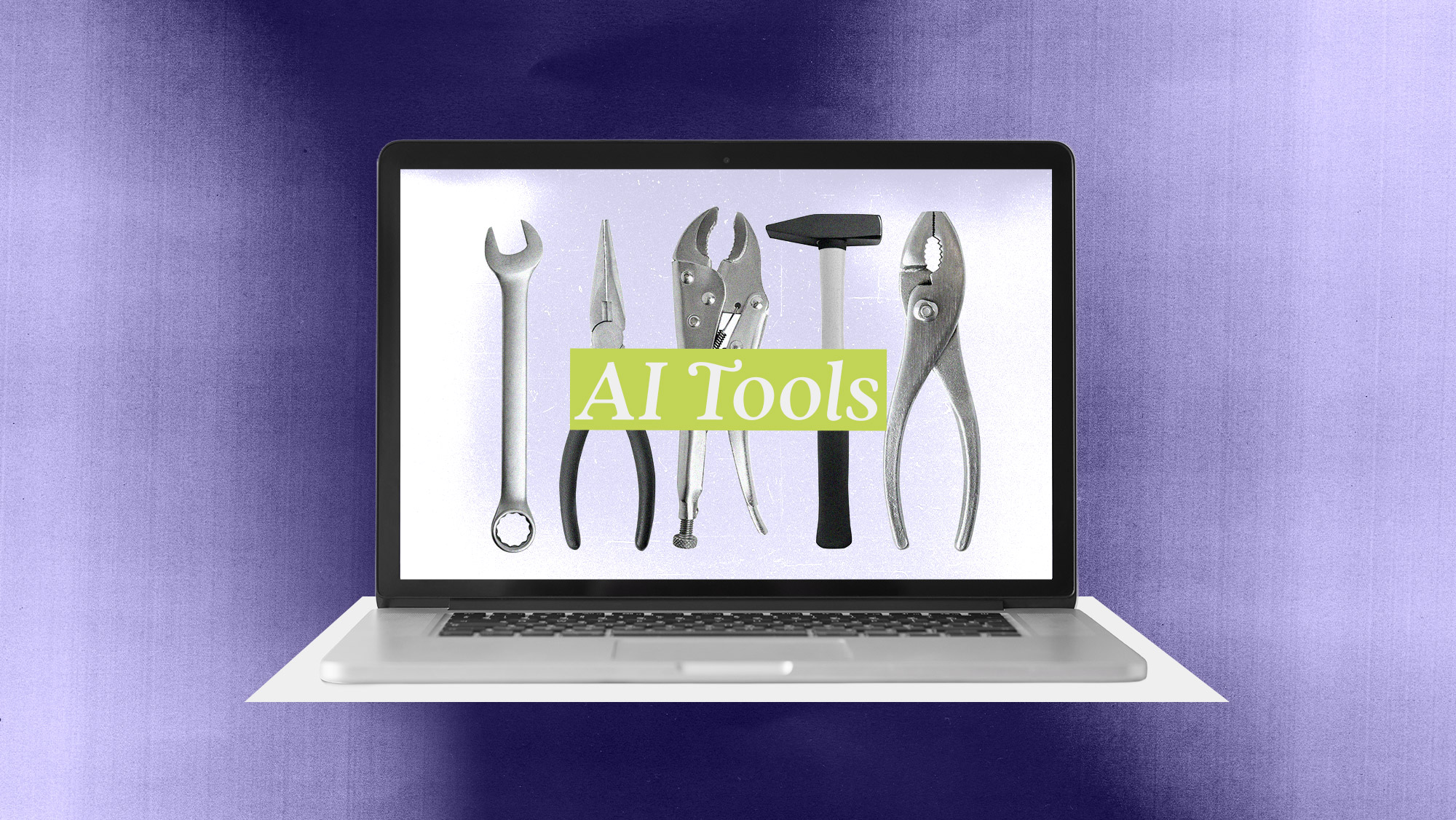
AI and the Retail Marketer’s Future
How AI transforms strategy and processes, driving the adoption of Positionless Marketing
Download the Increasing the Value of New Online Gaming Players report and discover proven methods to increase new player deposits, retention, and lifetime value when empowered by Positionless Marketing
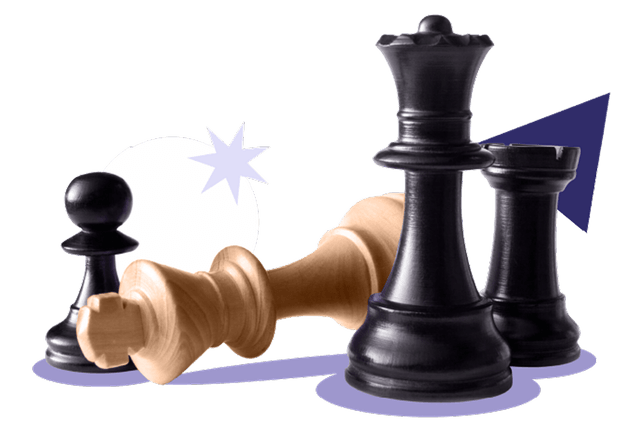
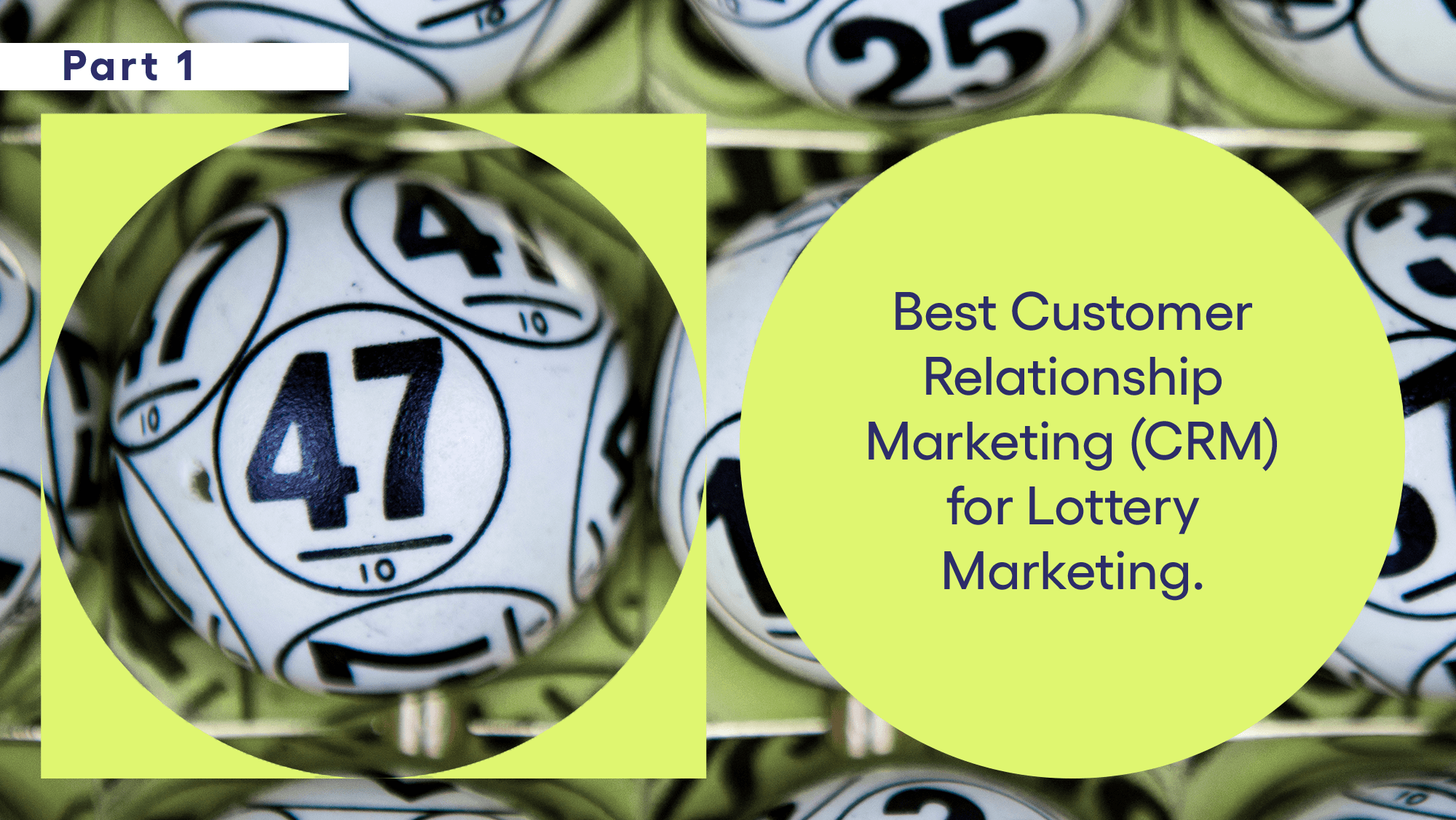
Lottery CRM practices are crucial to engaging players without causing fatigue. Categorizing players into lifecycle stages guides targeted engagement, with objectives and KPIs ensuring focused efforts emphasizing brand awareness for most stages. Managing contact frequency is vital, tailoring messaging to each stage to prevent overwhelming less active players. This strategic approach lays the foundation for effective lottery marketing, emphasizing efficiency and player engagement.
Categorizing players into distinct stages allows for tailored marketing strategies.
Clear marketing objectives and KPIs for each lifecycle stage help lotteries focus efforts on building brand awareness, educating players, and encouraging specific actions.
Optimal contact frequency, determined by the appropriate messaging for each stage, prevents overwhelming less active or dormant players, maintaining engagement without causing fatigue.
When it comes to Customer Relationship Marketing for Lotteries, a misfired Lottery CRM marketing message can result in losing a current or potential player (customer). In addition, overwhelming lottery players with too many messages causes “marketing fatigue” that can turn off a potential player today, tomorrow, maybe forever.
With that said, Lottery CRM Marketing Objectives should aim for attaining 100% coverage of eligible players, while understanding the communication objectives for each. This post, based on Optimove’s extensive experience in Customer Relationship Marketing for Lotteries and helping lotteries optimize marketing outreach to continually improve lifetime player (customer) value, covers two critical aspects of marketing before messages execution:
Insights on best player lifecycle stages to determine target audiences, and
At Optimove we’re all about marketing journeys, and every potential lottery player is on a journey. Some may be learning how to play. Others may have played, lost interest, and may or may not come back again. Knowing each player's lifecycle stage enhances Customer Relationship Marketing for Lotteries and affects how to best interact with the player to (excuse the pun) increase the odds that they will be engaged.
To reach lotteries’ marketing objectives, through years of engagements with players, Optimove has identified six lifecycle stages of potential players:
Registered players who have yet to make a deposit
Players who made their first deposit within the last 14 days
Active players within the last 30 days and new players with at least two activity days in their first two weeks of deposit
New and Reactivated players with no additional activity within 14 days OR Active players inactive for the last 30 days
Churn players inactive for over 12 months OR Non-Depositors inactive for over six months
Reactivated players within the last 14 days after churning
For each lifecycle stage, we have enumerated marketing objectives and key performance indicators that drives the marketing results depicted in the chart below:
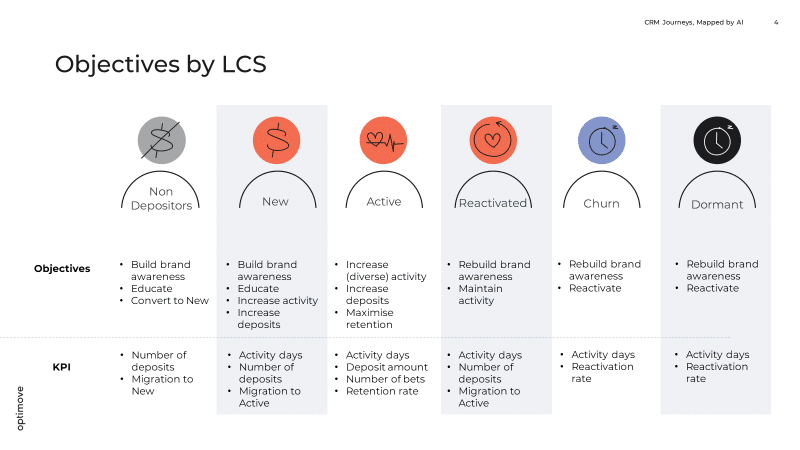
Notice in the chart above that each lifecycle stage, except Active players, has a brand awareness objective. This requires that a lottery keep a regular cadence of marketing messages to these target audiences, while not overwhelming players. Having this “right cadence” requires deep player insights on message engagement. (more on contact frequency below.)
In addition, a key objective for Non Depositors and New players is to educate each about the lottery. Obviously very different messaging is required compared to players with previous lottery experience.
KPIs (key performance indicators) are of course critical. While each lifecycle stage has variations, it is paramount that the lottery knows each player and their activity.
Optimal Customer Relationship Marketing for Lotteries shows clearly that engaged players, including New, Active, and Reactivated players, are receptive to learning more, often opening multiple messages within a week. However, Optimove data shows it is crucial to tailor message types to each target audience. Non-Depositors may benefit from frequent initial messages, but this frequency should be scaled back if they do not transition to active players. Churned players can handle a moderate level of messaging, while Dormant ones should receive messages infrequently. Beyond six months of non-response, it is advisable to discontinue contacting Dormant players to safeguard IP health.
Guidelines for best practices for contact frequency are in the chart below:
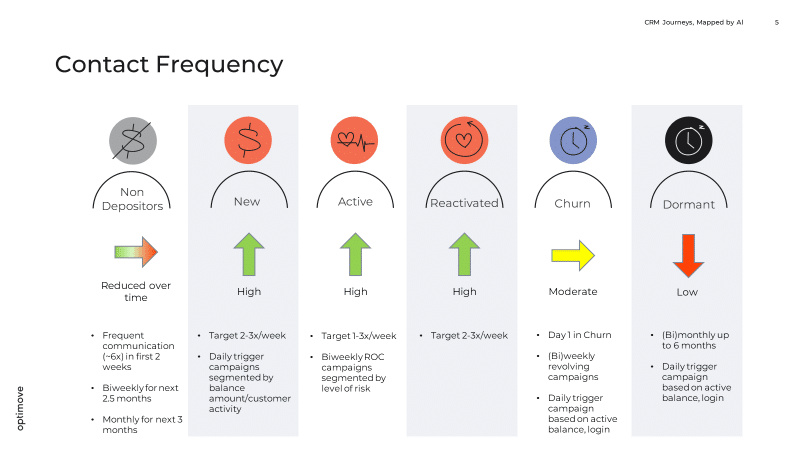
effective Lottery CRM practices are vital for lottery operators to engage their target audiences efficiently, avoiding misfired messages and marketing fatigue. Prior to message execution, lotteries should focus on three key aspects:
Categorize potential players into lifecycle stages based on behavior and engagement levels, such as non-depositors, new players, active players, reactivated players, churned players, and dormant players.
Define specific objectives and key performance indicators (KPIs) for each player lifecycle stage, whether it is building brand awareness, educating players, or encouraging specific actions.
Determine the appropriate contact frequency for each lifecycle stage, avoiding excessive messaging that can overwhelm less active or dormant players.
will provide further insights into building on these foundational principles that set the stage for your best lottery marketing ideas and executing marketing messages that work.
To hone your lottery marketing strategies, Request a demo.
Increasing the Value of New Online Gaming Players
Download the report and discover proven methods to increase new player deposits, retention, and lifetime value when empowered by Positionless Marketing.


Rob Wyse is Senior Director of Communications at Optimove. As a communications consultant, he has been influential in changing public opinion and policy to drive market opportunity. Example issues he has worked on include climate change, healthcare reform, homeland security, cloud transformation, AI, and other timely issues.


